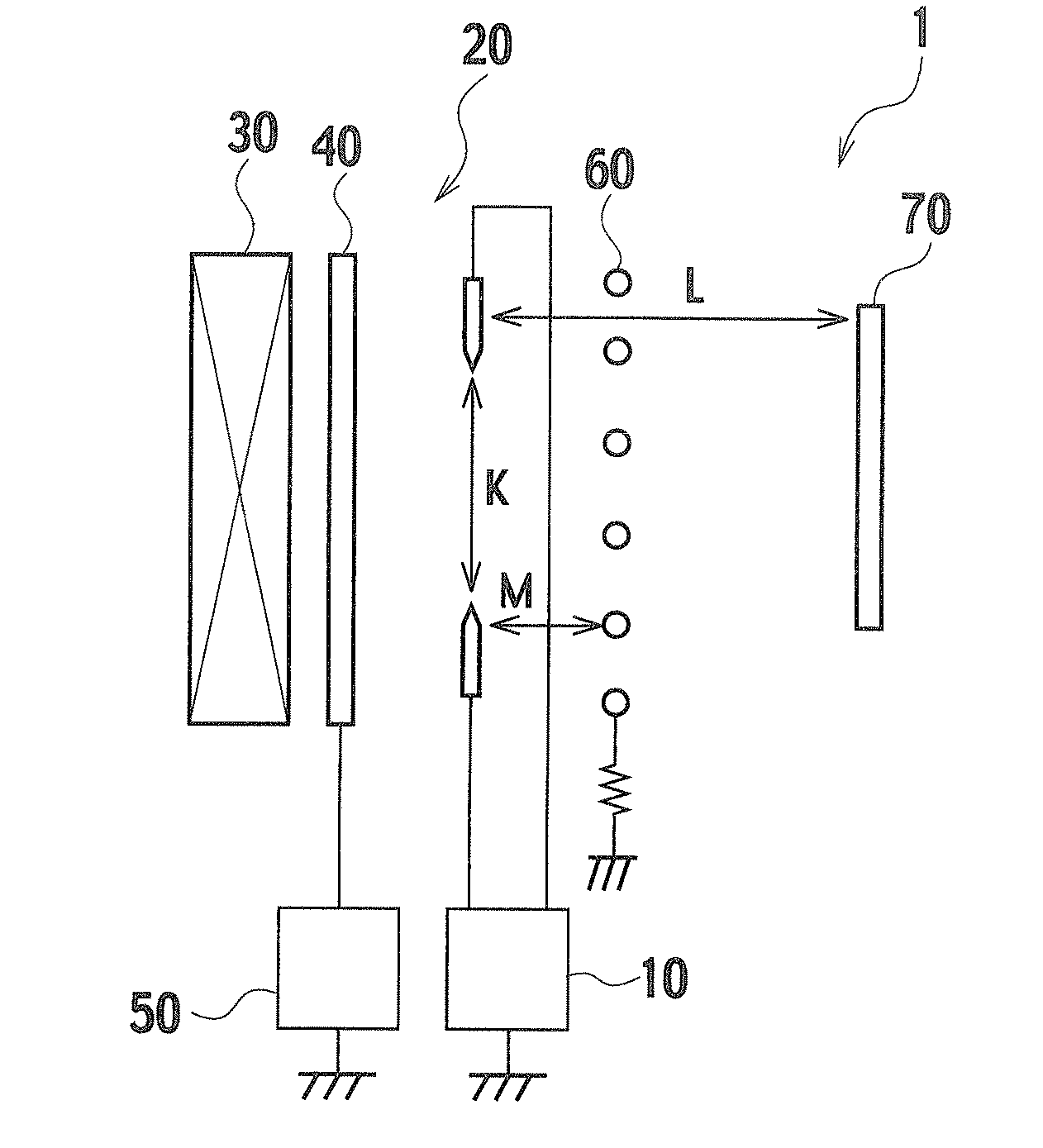Neutralizer
a technology of neutralizer and ac, which is applied in the field of neutralizer, can solve the problems of deviating residual potential, difficult to build a smaller and lighter ac-type neutralizer, and avoiding types of neutralizers, etc., and achieves the effects of enhancing the neutralization potential, reducing residual potential, and improving attenuation time characteristics
- Summary
- Abstract
- Description
- Claims
- Application Information
AI Technical Summary
Benefits of technology
Problems solved by technology
Method used
Image
Examples
Embodiment Construction
[0034]Descriptions will be hereinblow provided for an embodiment of a neutralizer according to the present invention on a basis of the drawings.
[0035]FIG. 1 is a diagram of an overall configuration of the neutralizer according to the present embodiment, FIG. 2 is an explanatory diagram showing a configuration of a discharger, and FIG. 3 is a block diagram showing a configuration of a high-voltage-generating circuit.
[0036]As shown in FIG. 1, the neutralizer 1 includes a high-voltage-generating circuit 10, a discharger 20, an air blower 30, an electrode 40 for detecting the pulsed streamer-corona, a detecting device 50 of the pulsed streamer-corona signal and a guard electrode 60. Reference numeral 70 denotes a neutralization target object.
[0037]The high-voltage-generating circuit 10 is a circuit configured to simultaneously apply DC high voltages with different polarities to the discharger 20 in an alternate manner at regular intervals. Descriptions will be provided for the configura...
PUM
 Login to View More
Login to View More Abstract
Description
Claims
Application Information
 Login to View More
Login to View More - R&D
- Intellectual Property
- Life Sciences
- Materials
- Tech Scout
- Unparalleled Data Quality
- Higher Quality Content
- 60% Fewer Hallucinations
Browse by: Latest US Patents, China's latest patents, Technical Efficacy Thesaurus, Application Domain, Technology Topic, Popular Technical Reports.
© 2025 PatSnap. All rights reserved.Legal|Privacy policy|Modern Slavery Act Transparency Statement|Sitemap|About US| Contact US: help@patsnap.com



